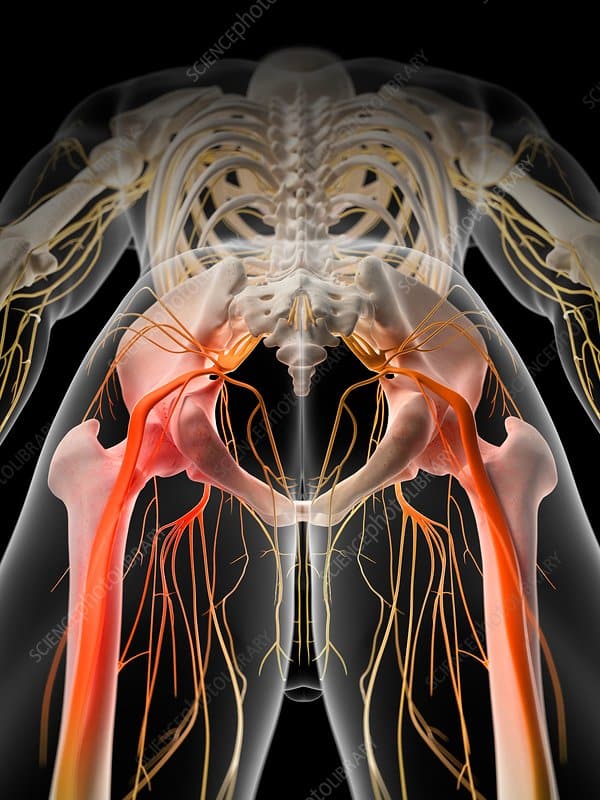Hello All, today we are going to looking at how to treat Sciatica, and What Are the Best Exercises for Sciatica Pain.
Now, if you have ever suffered from this condition you will know how extremely painful this can be. If you haven’t well this is a condition that is fairly common. They say that around 40% of us are likely to suffer from this for at least some stage of our lives.
It can be something that we can be stuck with for prolonged periods but it is treatable.
Depending on the cause of the Sciatica this kind of underlines just how much pain it will cause. This often requires surgery but to help relieve the pain of Sciatica there are exercises that you can try that may improve this condition.
Which, brings me to the title of today’s post…
The Best Exercises For Sciatica Pain
Hopefully, some of these ideas you find helpful. I am not a medical professional but from my research online hopefully you might find this information helpful. If you do please try and let us know in the comments it would be great to hear from you.
But before we continue…
What is Sciatica? – Just In Case You Don’t Know.

Well, many that have suffered from this condition will know already what Sciatica is, but for those who don’t, I will quickly explain. So, In our human body, we have a very thick nerve called the sciatic nerve.
It stretches from the lower back and right down to our feet. We have both one on the left and right.
Sciatica pain can be caused by several different things. These include of course inflammation, irritation, or even it can be a pinching of a nerve located in the lower back.
The most common cause of the pain comes from a herniated or slipped disk. When this happens this causes pressure on the root of the Sciatic nerve.
A lot of people with sciatica can get better on their own over a period of time. Not everyone does but usually what your doctor or chiropractor might recommend is doing gentle stretching exercises.
The Best Exercises For Sciatica Pain
What are the Symptoms of Sciatica?
Sciatica is nerve pain from an injury or irritation to the sciatic nerve. The sciatic nerve is the longest and thickest nerve in the whole body. It’s actually made up of five nerve roots:
Two from the lower back region called the lumbar spine and…
Three from the final section of the spine are called the sacrum.
The five nerve roots come together to form a right and left sciatic nerve. One sciatic nerve runs through each of your hips, bottom, and down each leg, ending just below the knee.
The sciatic nerve then branches into other nerves, which continue down your leg and into your feet and toes.
The term sciatica is commonly used to describe any pain that starts in the lower back and goes down through the buttocks and into the leg.
What this pain shares in common are an injury to a nerve, an irritation, inflammation, pinching, or compression of a nerve in your lower back.
If you have sciatica, you can experience mild to severe pain anywhere along the path of the sciatic nerve. Basically, anywhere from the lower back, through the hips, bottom, and down your legs.
It can also cause muscle weakness in your leg and foot, numbness in your leg, and the horrible pins and needles feeling in your leg, foot, and toes.
How Does The Pain Feel?

People describe Sciatica pain in different ways. In most cases, this depends on what is causing the issue.
Some describe the pain as sharp, shooting, or jolting. Others describe this pain as burning or stabbing.
The pain can be constantly there or it can come and go.
Also, the pain is generally more severe in your leg compared to your lower back.
Although this is not always the case. The pain can feel worse if you sit or stand for long periods of time without getting up or changing position regularly.
It can also occur just by standing up and when you twist your upper body.
Even Coughing, sneezing or laughing may be enough to make the pain occur after it is absent.
How Is It Diagnosed
Your doctor or a spinal specialist will try to identify the cause of your Sciatica and come up with a treatment plan for you. You will be asked questions. This is to help to find the cause of your Sciatica and to try to find a way to manage your pain.
As well this any other symptoms you may experience will also be taken into account to better understand your condition.
First of all, the specialist will ask about your current symptoms and anything that you have already tried to alleviate the pain.
You will be asked questions, such as :
- How long ago did the pain start?
- Where exactly is the pain? eg. Does it go down your leg? Is it in both legs?
- On a scale from 1 to 10, with 10 being the worst pain imaginable, how much pain are you in?
- Do you get any weakness or tingling in your legs or feet?
- Have you done anything differently?
- When walking uphill or downhill does the pain get worse?
- What steps have you taken to reduce the pain? Have you tried any exercises?
- Is there anything that reduces the pain or makes it worse?
The specialist will also do some physical and neurological examinations.
What Happens During The Examinations?
In the physical exam, your doctor will look at your posture, how much you can move and your general physical condition. They will also note any specific movement that causes you pain.
After that, the doctor will examine your spine, note its curvature and alignment, and feel for any muscle spasms.
During the neurological exam; The specialist will test your reflexes, muscle strength, and other nerve changes.
To diagnose the cause of your sciatica, you may need to have some imaging tests. You may have an x-ray or a cat scan. If it’s deemed that you have a herniated disc or spinal stenosis that is causing your sciatica, the doctor will ask for a magnetic resonance imaging test to be carried out.
Once the doctor sees the test results they will have a complete picture of your sciatic nerve pain.
Then using this information, he or she will be able to make a diagnosis of the underlying cause of your sciatica.
How Is Sciatica Treated
In the first instance of sciatica treatment, nonsurgical methods are used, such as heat therapy, cold treatment, and pain medications.
These include;
- Applying either ice or cold packs to the lower back. This reduces swelling around the sciatic nerve, as well as numbing to reduce the pain.
- Heat therapy can be applied to the lower back to reduce muscle tension and spasms that may be contributing to sciatica.
- OTC medicines, including acetaminophen or anti-inflammatory drugs may also be used to deal with flare-ups of sciatica.
- In severe cases, a much stronger painkiller such as opioids or muscle relaxants are prescribed to relieve the immense pain.
Many people can find some relief using first-line treatments. For others, they may use more intensive nonsurgical methods that are necessary for chronic pain. These include:
- Epidural steroid injections, put directly in to the spine to reduce inflammation, providing pain relief that may last between 1 week and even as long as 1 year.
- Spinal manipulation, is carried out by a chiropractor or spine specialist, it may reduce sciatica by moving the spinal structures to a more comfortable position and removing pressure from the sciatic nerve and lower spinal area.
- Physical therapy and exercise is commonly used to strengthen and rehabilitate the back muscle and spinal structures, which can gradually remove pressure from the lumbar spine and the sciatic nerve.
Other treatments, such as acupuncture or massage therapy have also been shown to be effective treatments for relieving the pain of sciatica. As well as low back pain. Cognitive-behavioural therapy which is where you speak to a professional about the problems may also help patients to cope with the emotional effects of being in chronic pain.
If the sciatic pain is not getting any better using nonsurgical treatments, surgery may be necessary.
- A microdiscectomy is a minimally invasive procedure in which whatever is irritating the sciatic nerve is removed. A microdiscectomy is usually used when a lumbar herniated disc or bone spur causes sciatica, and has a relatively short recovery process.
- A laminectomy removes a portion of the vertebra called the lamina to relieve pressure on the sciatic nerve. This procedure is more common for sciatica caused by spinal stenosis, and involves a larger incision and somewhat longer recovery time than a microdiscectomy.
Finding a good treatment option can be a process of trial and error, and may include a combination of treatments to effectively manage pain. People living with sciatica are encouraged to use the treatment options they are most comfortable with, and that is most effective for their pain.
Now, The Best Exercises For Sciatica Pain ?
6 Exercises to Relieve Sciatica
These are the very best exercises for Sciatica Pain to do that involve gentle stretching :
i.) Standing Hamstring Stretch
This stretch can help ease pain and tightness in the hamstring caused by sciatica.
- Place your right foot on an elevated surface at or below your hip level. You can use a chair, or a step on a staircase. Flex your foot so your toes and leg are straight. If your knee tends to hyperextend, keep a slight bend in it.
- Bend your body forward slightly toward your foot. The further you go, the deeper the stretch. Do not stretch to far so that it causes you pain.
- Release the hip of your raised leg downward as opposed to lifting it up. If you need help easing your hip down, you can use a yoga strap or long exercise band over your right thigh and under your left foot.
- Hold this position for 30 seconds, then repeat on the other side.
ii.) Knee to Opposite Shoulder
This simple stretch helps relieve sciatica pain by loosening your gluteal and piriformis muscles, which can become inflamed and press against the sciatic nerve.
- Lie on your back with your legs extended and your feet flexed upward.
- Bend your right leg and clasp your hands around the knee.
- Gently pull your right leg across your body toward your left shoulder. Hold it there for 30 seconds. Remember to pull your knee only as far as it will comfortably go. You should feel a nice stretch in your muscle, You should not feel any pain.
- Push your knee so your leg returns to its starting position.
- Repeat for a total of 3 reps, then switch legs.
iii.) Forward Pigeon Pose
- Kneel on a mat on all fours.
- Pick up your right leg and move it forward on the ground in front of your body. Your lower leg should be on the ground, horizontal to the body. Your right foot should be in front of your left knee while your right knee stays to the right.
- Stretch the left leg out all the way behind you on the floor, with the top of the foot on the ground and toes pointing back.
- Shift your body weight gradually from your arms to your legs so that your legs are supporting your weight. Sit up straight with your hands on either side of your legs.
- Take a deep breath. While exhaling, lean your upper body forward over your front leg. Support your weight with your arms as much as possible.
- Repeat on the other side.
iv.) Reclining Pigeon Pose
The pigeon pose is commonly used in yoga. It works to open the hips. There are lots of different versions of this stretch. The first is a starting version known as the reclining pigeon pose. If you’re just starting your treatment, you should try the reclining pose first.
- While on your back, bring your right leg up to a right angle. Clasp both hands behind the thigh, locking your fingers.
- Lift your left leg and place your right ankle on top of the left knee.
- Hold the position for a moment. This helps stretch the tiny piriformis muscle, which sometimes becomes inflamed and presses against the sciatic nerve, causing pain.
- Do the same exercise with the other leg.
Once you can do the reclining version without pain, work with your physical therapist on the sitting and forward versions of the pigeon pose.
v.) Sitting Pigeon Pose
- Sit on the floor with your legs stretched out straight in front of you.
- Bend your right leg, putting your right ankle on top of the left knee.
- Lean forward and allow your upper body to reach toward your thigh.
- Hold for 15 to 30 seconds. This stretches the glutes and lower back.
- Repeat on the other side.
vi.) Sitting Spinal Stretch
Sciatica pain is triggered when vertebrae in the spine compress. This stretch helps create space in the spine to relieve pressure on the sciatic nerve.
- Sit on the ground with your legs extended straight out with your feet flexed upward.
- Bend your right knee and place your foot flat on the floor on the outside of your opposite knee.
- Place your left elbow on the outside of your right knee to help you gently turn your body toward the right.
- Hold for 30 seconds and repeat three times, then switch sides.
My Final Thoughts
As we have learned there are lots of different causes of Sciatica. Some of them can go away on their own given time. Others may need to be treated with over the counter pain killers. Some may even require surgery. It depends on how severe your condition is, but in most cases, it is likely you will be recommended low impact exercises.
The Best Exercises for Sciatica contained here do help if done regularly and carefully. Just remember never stretch too far, otherwise, you could hurt yourself. Also, please remember I am not a medical professional. What I have named as the Best Exercises for Sciatica in this article are just some that I have found from my own research. They may not be the best for everyone. For this reason, also do your own research.
Your Feedback
I wish to thank you for taking the time out of your busy day to read this article – the Best Exercises for Sciatica.
If, you have a question or would like to leave feedback then please feel free to leave it below.
I love to hear from you all and I will get back to you ASAP.
Also, If, you know anyone else who would benefit from reading this then please feel free to share it.
Take great care of yourself because you are worth it.
#StayDynamic
Alex B. Chivers
DynamicIdeas4Life.com
Article Originally Written by Lisa Harvey and First Published on HealthyMindHealthyPeople.com.
Read This Next…

Inflame Pain Relief By HFL and Dr Sam Robbins
If you are in the market for a dietary supplement to help with chronic pain such as that which you might feel with Sciatica and other types of back pain, joint pain etc. This might be something you may like to try. It’s called Inflame and Pain Relief by a company called HFL, and so far this is one of the best I’ve reviewed so far.
If you would like to find out more then read my full review;
https://dynamicideas4life.com/inflame-and-pain-relief-review/


